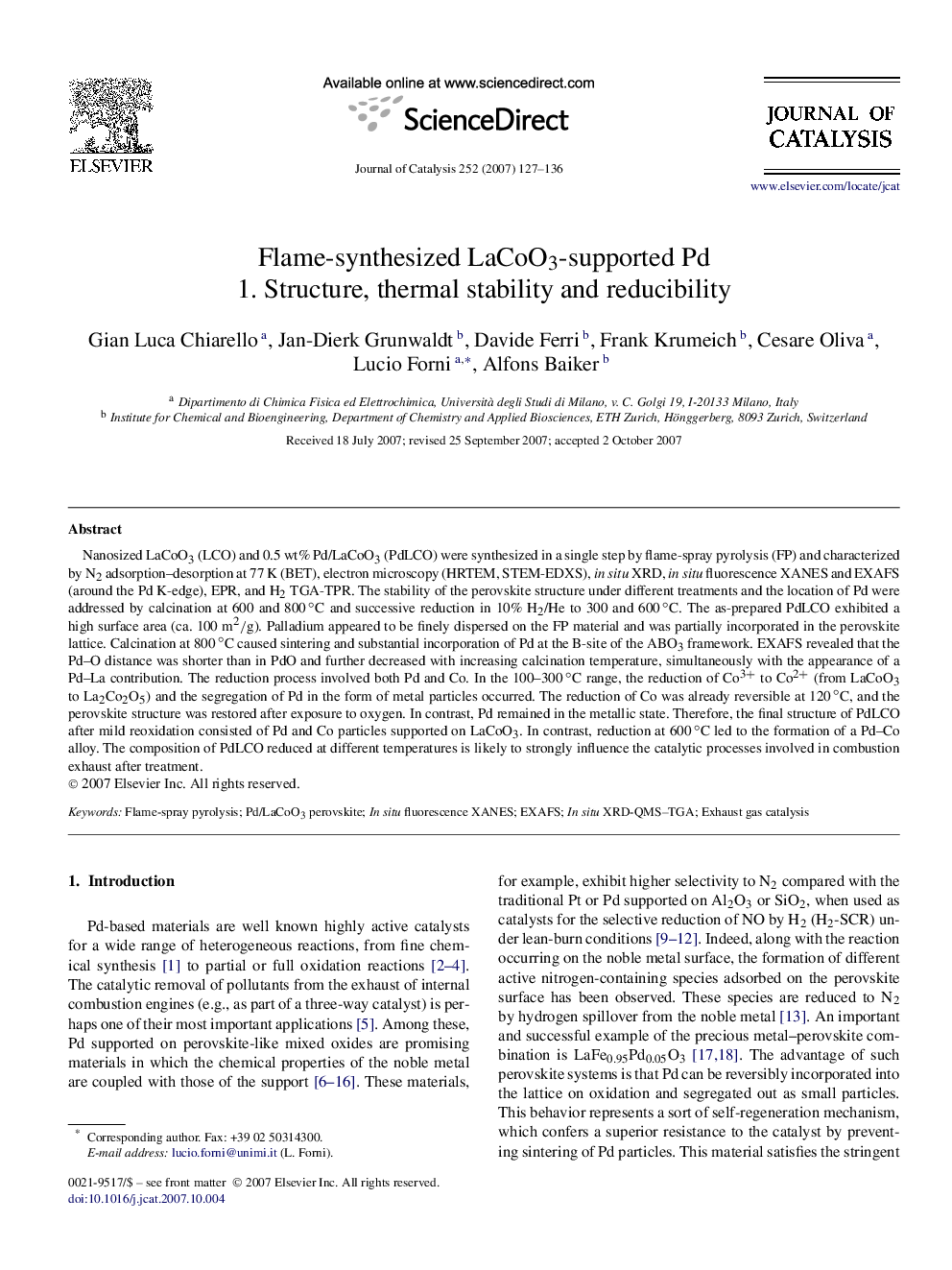| Article ID | Journal | Published Year | Pages | File Type |
|---|---|---|---|---|
| 62394 | Journal of Catalysis | 2007 | 10 Pages |
Nanosized LaCoO3 (LCO) and 0.5 wt% Pd/LaCoO3 (PdLCO) were synthesized in a single step by flame-spray pyrolysis (FP) and characterized by N2 adsorption–desorption at 77 K (BET), electron microscopy (HRTEM, STEM-EDXS), in situ XRD, in situ fluorescence XANES and EXAFS (around the Pd K-edge), EPR, and H2 TGA-TPR. The stability of the perovskite structure under different treatments and the location of Pd were addressed by calcination at 600 and 800 °C and successive reduction in 10% H2/He to 300 and 600 °C. The as-prepared PdLCO exhibited a high surface area (ca. 100 m2/g). Palladium appeared to be finely dispersed on the FP material and was partially incorporated in the perovskite lattice. Calcination at 800 °C caused sintering and substantial incorporation of Pd at the B-site of the ABO3 framework. EXAFS revealed that the PdO distance was shorter than in PdO and further decreased with increasing calcination temperature, simultaneously with the appearance of a Pd–La contribution. The reduction process involved both Pd and Co. In the 100–300 °C range, the reduction of Co3+ to Co2+ (from LaCoO3 to La2Co2O5) and the segregation of Pd in the form of metal particles occurred. The reduction of Co was already reversible at 120 °C, and the perovskite structure was restored after exposure to oxygen. In contrast, Pd remained in the metallic state. Therefore, the final structure of PdLCO after mild reoxidation consisted of Pd and Co particles supported on LaCoO3. In contrast, reduction at 600 °C led to the formation of a Pd–Co alloy. The composition of PdLCO reduced at different temperatures is likely to strongly influence the catalytic processes involved in combustion exhaust after treatment.
